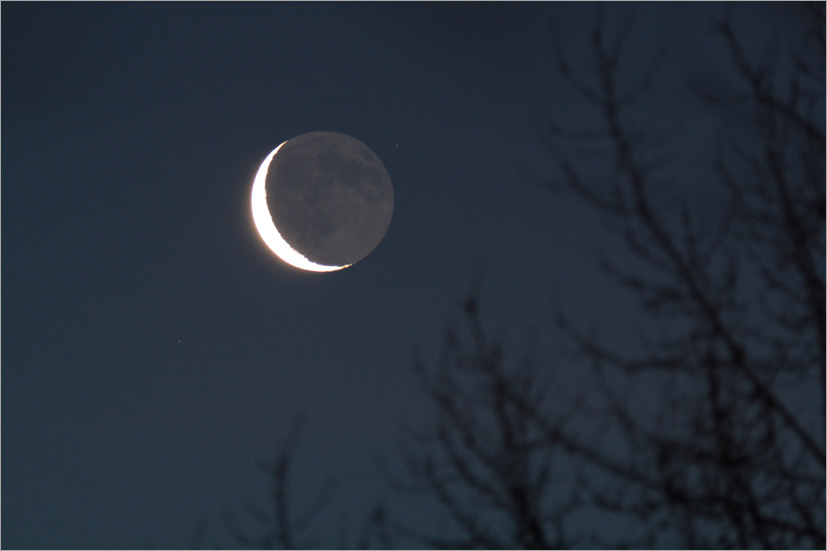
Longer Exposure
Crescent Moon and Earthshine
This image was made with a small refractor with 420mm of focal length on a fixed tripod.
Even at a one second exposure at this focal length, the image is still sharp and not blurred from trailing due to the Earth's rotation. But we won't be able to expose much longer at this long of a focal length before we'll need a tracking platform.
|
|
The brilliant crescent Moon with Earthshine rises early one morning.
The crescent portion of the Moon is illuminated by direct sunlight. It would normally require a relatively short exposure of about 1/125th of a second at ISO 800 at f/6.
The dark side of the Moon is illuminated by Earthshine - sunlight reflected off of the day side of the Earth back to the Moon. It required an exposure of 1 second at ISO 800 at f/6.
The exposure required to record Earthshine is much longer because it records much dimmer reflected light and not direct sunlight.
The longer exposure totally overexposes any detail on the crescent portion of the Moon.
Image Data
- Lens / Scope: Stellarvue SV70ED ED doublet refractor
- Focal Length: 420mm
- F/stop: f/6
- Exposure: Single 1-second exposure.
- Mount: Fixed tripod
- Guiding: None
- Camera: Unmodified Canon EOS 1000D (Digital Rebel XS)
- Mode: JPEG
- ISO: 800
- White Balance: Daylight
- In-Camera Noise Reduction: Off
- Filter: None
- Temp: Not recorded
- Start Time: 6:10 a.m.
- Date: May 23, 2009
- Location: Voorhees, NJ
- Calibration: None
- Processing: Standard in-camera JPEG processing. Image cropped in post processing.